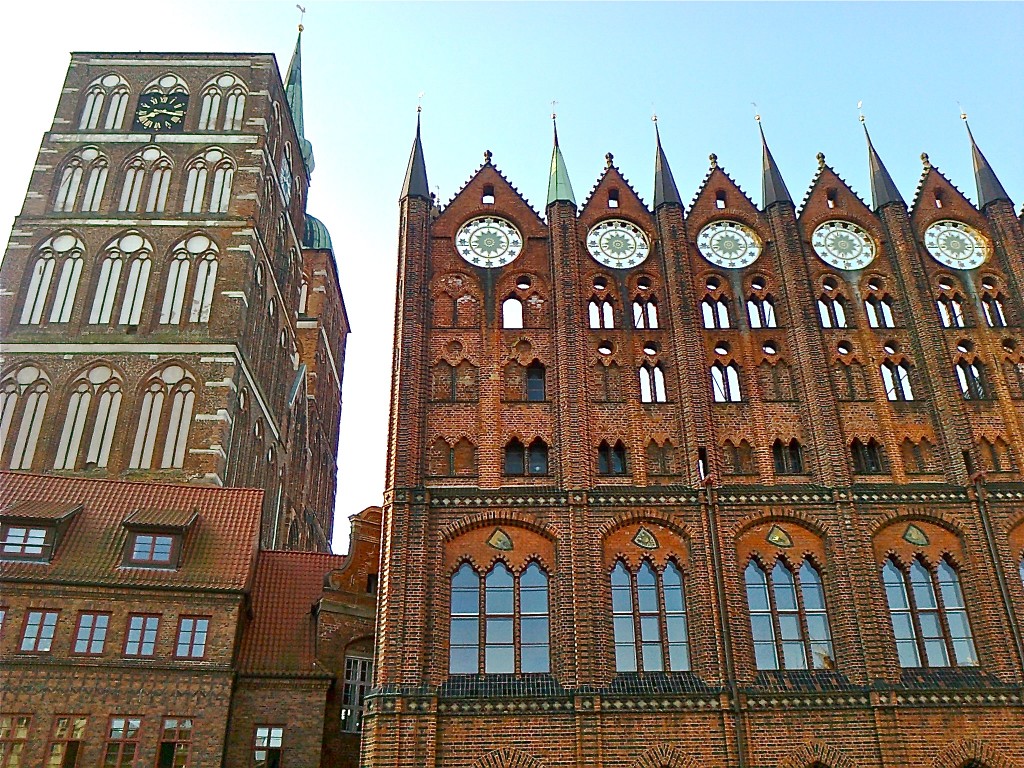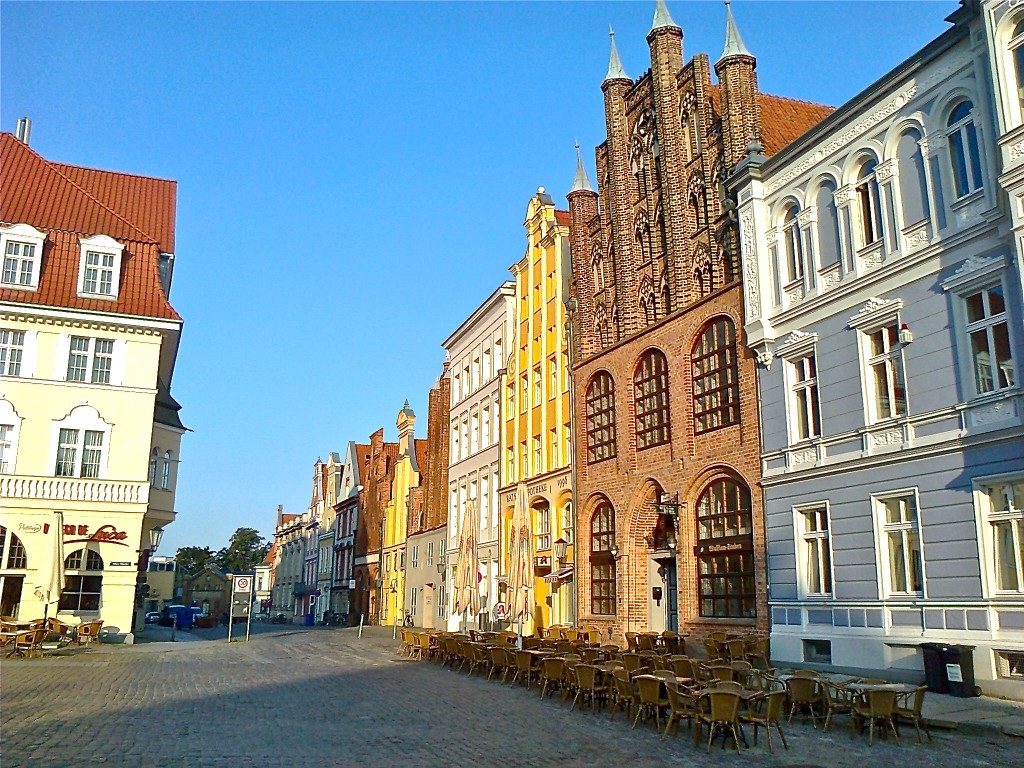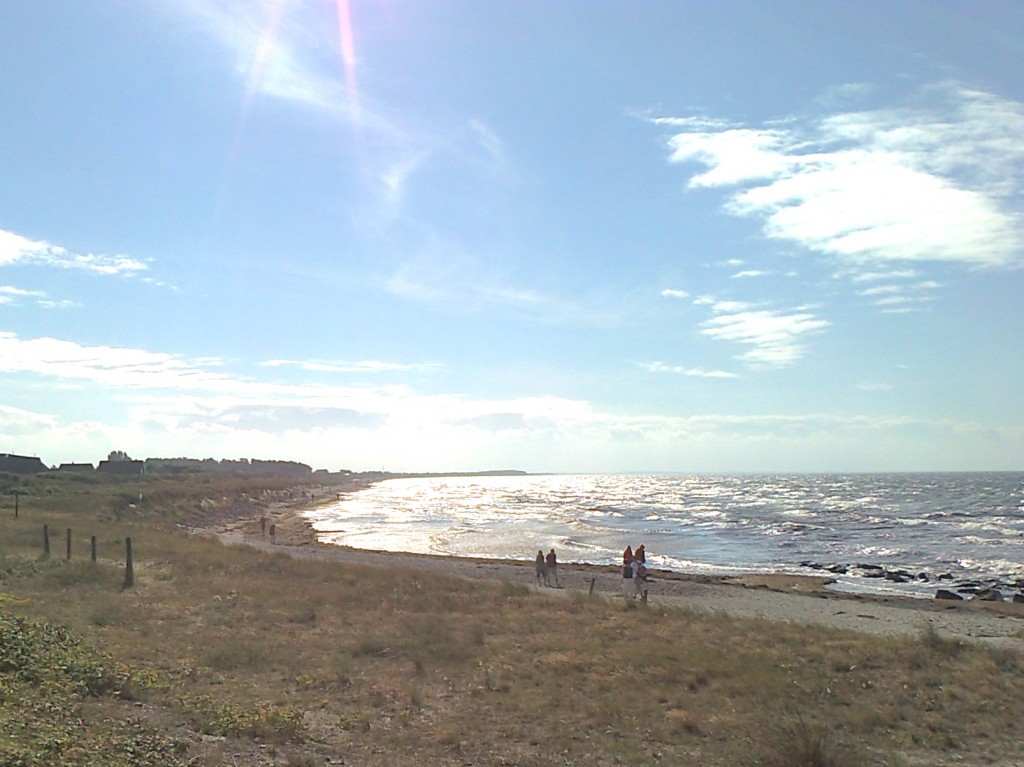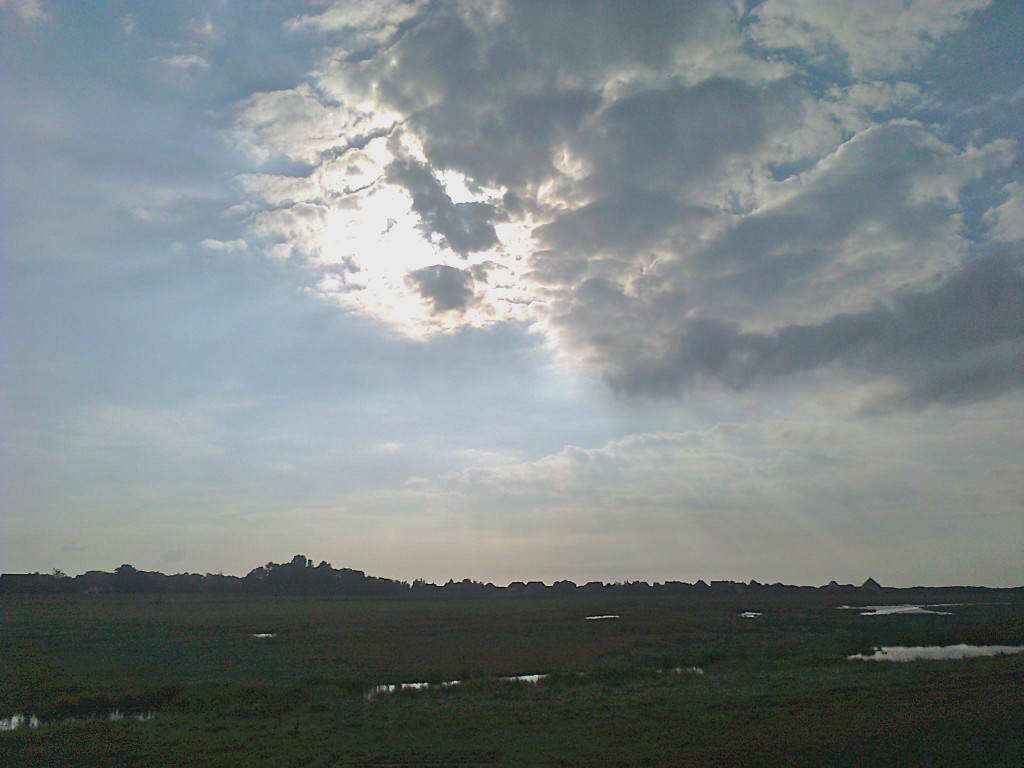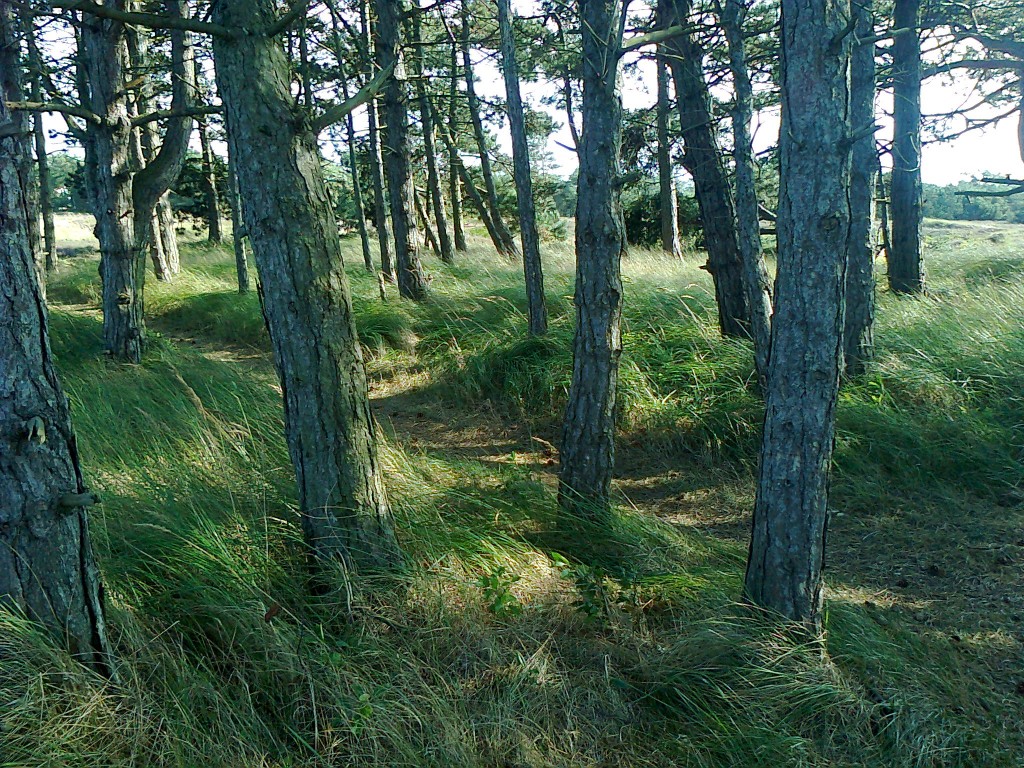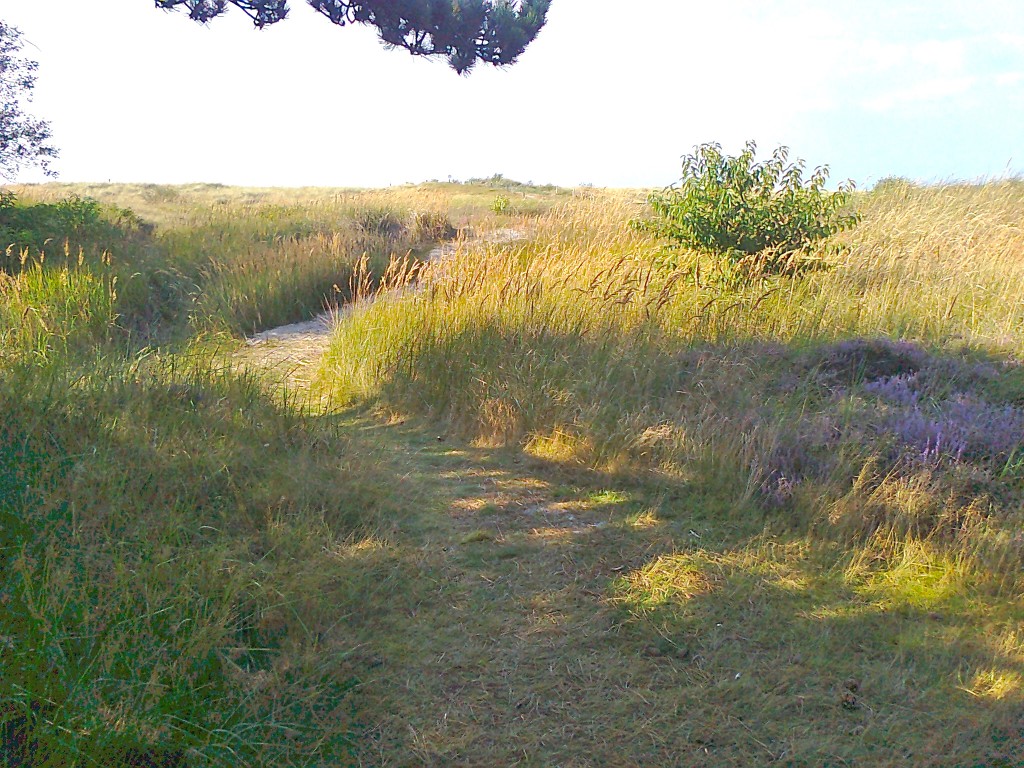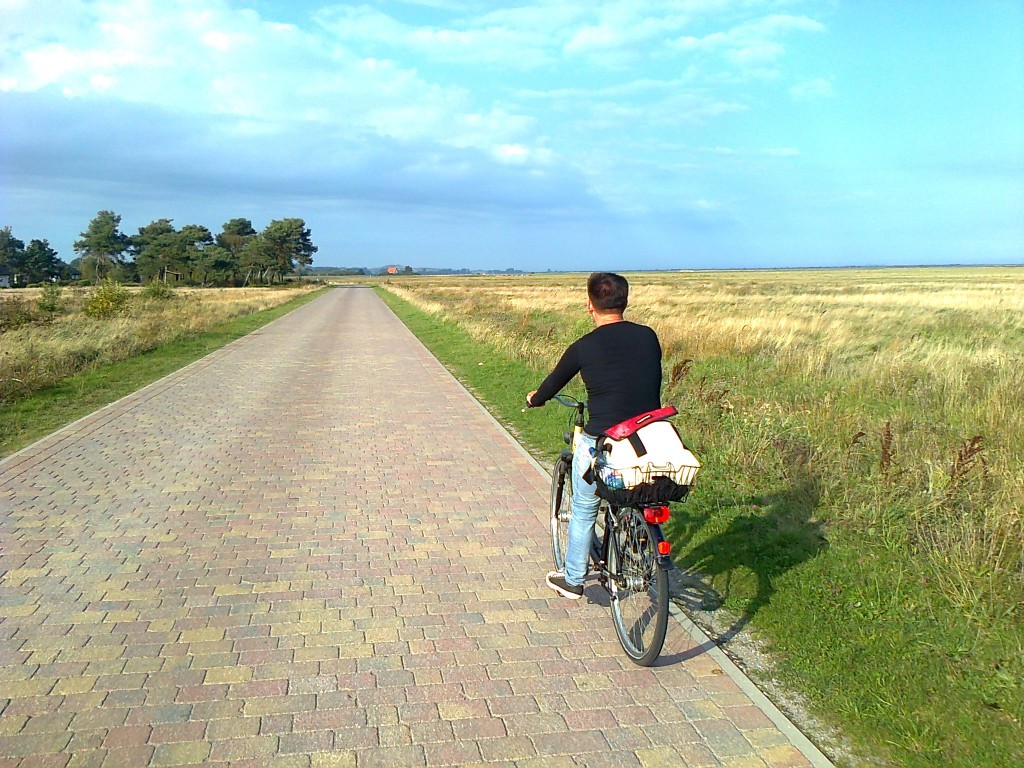Weekend Trips: From Berlin to Hiddensee
My dear Needle readers, welcome back after the summer break. It’s a golden autumn, the cultural season starts up again, the city is delivered from its August tourists… Who would want to leave our beautiful city right now? Perhaps I appreciate it all the more for having just returned from a little Ausflug to the Ostsee, or Baltic Sea. One of last year’s most read posts was on how to get to the city of L’vov in the Ukraine from Berlin by rail. The coming weeks will present a number of weekend trips that are a little less intrepid, but just as worthwhile.
Hiddensee is an island in the Baltic, easily reachable from Berlin, shaped like a seahorse, less than 400 metre wide at its narrowest but almost 17 km long. It has no cars. It has instead pastures with grazing cattle, sheep, horse-drawn carts, and endless beaches of chalky sand that face the rough wild of the Baltic Sea. Stand here facing the sea, with the wind in your face, and you just about forget about everything in the world.
The Baltic, or ‘Ostsee’ (Eastern Sea) as the Germans call it, is a subtle landscape mostly in former East Germany. The islands appear low-rise from the ferry from the Hanseatic city of Stralsund. Look out to sea and the land appears only as thin lines painted on the grey. You could dab the paint with the thick of your thumb.
The boat is full of elderly people drinking fig-flavoured vodka shots that come in little glass vials from cubic cardboard boxes, knocking them against the tables before downing them. In Stralsund, they waited at the dock for the ship to arrive, all standing with their heavy bags, in a fit of destination anxiety, for a full forty minutes before the boat docked. Now they’re finally jolly and on holiday, and the little Feigling vodka bottles start collecting in piles on the tables.
Stralsund was startling, full of medieval brick gothic, an undiscovered Lübeck. Have you been to the capitals of the Baltic republics? I was reminded of Tallinn or Riga, the way so much of it has been recently renovated, post-Communism, leaving it with a faintly plastic feel, the uniformity of the renovation making it all seem new. But this is uncharitable, Stralsund is gorgeous, especially its fifteenth-century churches and medieval streets.
An offbeat attraction is a fountain in the old square (Alter Markt) of Stralsund with a sense of humour. It spurts only erratically, fills the pavement with water, threatens to blow its lid, several times, does not, drains, then spurts again. Some children almost got very wet. Now, this is probably an indication of how difficult I found it to wind down in Stralsund after Berlin, but I thought the fountain was the most entertaining attraction on offer in Stralsund. The streets were almost deserted both at night and in the morning, and there wasn’t even a place open Monday morning in the port to find a coffee. Stralsund must be one of the prettiest most boring places I have ever been. Then again, perhaps I just needed to join in the geriatric vodka fest on the boat to Hiddensee.
Yes, why not, it’s 10am but I could use a few shots. The boat speeds up and now I’m having fun.
The water is as smooth as a lake, lightly combed, disturbed only by the occasional water taxi, or a flotilla of birds. We follow a circuitous route to the harbours, I imagine there are many shallows, lots of sandbars, perhaps if you fall off the boat you can just stand up and walk to shore. We are now approaching Kloster, the most distant port on Hiddensee, and the sea seems to meet land at a level, at a streak of yellow which could be reeds or beach. There are the still thicknesses of trees beyond, whose roots may well be in sea water. If the sea weren’t so still, it would wash right over the island.
I’m mellowing into the Baltic aesthetic. It’s like I’ve been walking through an art museum and skipping over the small landscape paintings, tucked into the side hallways off the main exposition rooms.
Spending time on Hiddensee or on Rügen is like walking into a 17th-century miniature, the palate an economy of greys and muted greens. The land is but a thin layer, a tone wedged in the water. The land is painted as a blur, grasses and reeds that dissolve into sand. The trees have a surprising solidity and stillness, because they have so little to hold on to. They are broad, detailed, majestic, and could be as easily rooted in the air as in the changeability of the tides. A branch is drooping over a field of heather. The skies above seem painted by Ruisdael.
We arrive in Kloster, go up the hill to see the lighthouse, ride bikes towards the end of the island after a lunch, I see mist emerge between the trees, then realise the mist is sea. We wander into fields of reeds and heather. Then there’s the sea traced with strange shapes of seaweed.
Hiddensee, with its thatched houses, pony-led carriages, and curated ramshackle barns, is both beautiful and a little precious. Arriving in the bigger spaces of Rügen in the late afternoon is like arriving back on the mainland. Schaprobe, a workaday town, has a little backstein Gothic chapel all boarded up. It’s an accidental gem, and people in the restaurant look like they live here. I know that Rügen is built up along its coasts with development, but the interior is vast pasture, with boulevards, trees arching the narrow roads. It’s a landscape with an island’s softness writ large.
From here we return to Berlin by train, from Bergen, and arrive just before midnight. The big city seems enormous, the city life sparkling, diverse, exciting. It’s amazing to think we’ve only been away one night. We probably could have done with a night on Hiddensee to slow the whole trip down, but as far as excursions go, this one is magnificent. We feel softened, like those sun and sea weathered grasses on the islands, and more free than the sea.
Some travel tips: You can save a lot of money travelling with an ‘Ostsee Ticket’ on the Bahn. This can be used last minute, book it online, print it off, and off you go! It allows you return rail travel to almost any place in the Ostsee region for about 20 EUR each way, and cheaper for accompanying passengers. You need to use the Regional trains; it is about 3 hours to Stralsund. We spent the night there at the Schweriner Hof (got a hotel deal online), then took the early morning ferry to Hiddensee (a very pleasant couple of hours on the sea). The schedules are located here. Note there are also Watertaxis from Stralsund if you are rolling in dough. There are three ports on Hiddensee: Neuendorf (a little bleak, exposed), Vitte (the little island capital with the most services) and Kloster (more historic, a little more twee but lovely). We got off at Kloster, rented bikes (6 EUR/day), spent the day there riding around. There are inns and rooms on the island. In the off-season, it would have been easy to walk in and stay at one of them (we got quotes between 60 and 100 EUR for a double). But we came back to Berlin that evening via Rügen (1730 h boat from Kloster, giving us six hours on the island, to the pretty Schaprode, then a quick bus to Bergen and train home, the itinerary from Schaprode you can verify on bahn.de).




